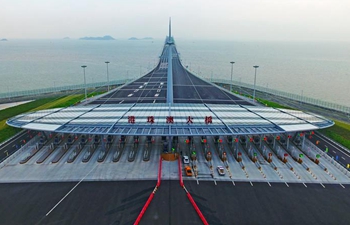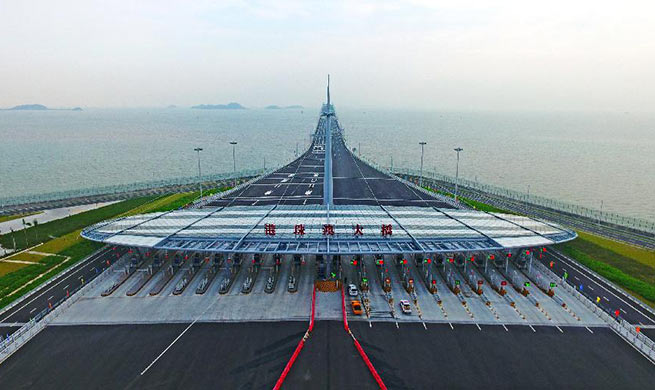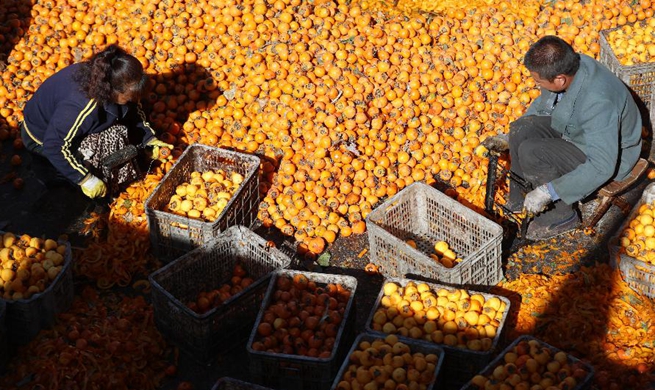HOUSTON, Oct. 24 (Xinhua) -- The resumption of sanctions on Iran adds uncertainty to crude oil prices, according to the U.S. Energy Information Administration (EIA) on Wednesday.
EIA's October Short-Term Energy Outlook (STEO) forecast Brent crude oil spot prices in the fourth quarter of 2018 and also in 2019. However, the effects of the U.S. withdrawal from the Joint Comprehensive Plan of Action (JCPOA) in May, the resumption of Iran sanctions and the potential response from other countries posed significant uncertainty to the forecast.
According to the outlook, Brent crude oil spot prices, which averaged 70 U.S. dollars per barrel in September, are expected to average 81 dollars per barrel in the fourth quarter of 2018 and will fall to an average of 75 dollars per barrel in 2019.
EIA said these ups and downs reflect the recent upward price movement and the possibility that crude oil prices could remain elevated while market participants assess the effects of the sanctions.
EIA also forecast West Texas Intermediate (WTI) prices to increase at a slightly slower rate, leading to a widening of the Brent-WTI spread to 9 dollars per barrel in October. But the spread would narrow to 4 dollars per barrel by December 2019.
U.S. President Donald Trump announced in May that his administration decided to leave the Iran nuclear deal (JCPOA) signed in 2015. The announcement included two wind-down periods. On Nov. 4, the second period will end and trigger the re-imposition of full sanctions on Iran, including a number of measures that target Iran's energy sector.
The outlook assumes that the effects of sanctions will increase during the first few months of full implementation. The exact effect of the sanctions will depend on the total volumes of crude oil and condensate that comes off the market and the response from members of the Organization of the Petroleum Exporting Countries (OPEC) and other countries.
In the months following the full implementation of sanctions in November, the total volumes of crude oil and condensate coming off the market will become more apparent. However, it is uncertain if there will be any other producers to compensate for lost supplies from Iran. Differences between any potential production response and the actual volumes would likely result in increased price volatility, according to EIA.
The higher crude oil prices at the end of 2018 and in 2019 will likely support increased global crude oil production.
EIA forecast that U.S. crude oil production to increase by 1 million barrels per day in 2019. EIA also forecast that total global liquid fuels inventories to decrease by 200,000 barrels per day in 2018, followed by an increase of 280,000 barrels per day in 2019.












